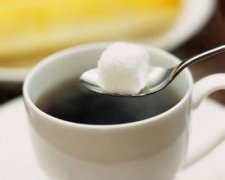Identify two compounds related to the bitterness of coffee

The researchers identified two compounds related to the bitterness of coffee
Adding some milk and sugar to a steaming cup of coffee is a sign that many people start a new day. Although this is done to reconcile the bitterness of the drink, the reason why coffee makes us frown has puzzled scientists for decades. Now, researchers have narrowed the search by identifying two compounds associated with the bitterness of coffee, whether mild breakfast coffee or Italian espresso. A study presented at the annual meeting of the American Chemical Society in Boston showed that it was the roasting process-not the coffee beans themselves-that produced these compounds, a discovery that opened the door to improving the processing of coffee beans.
A cup of coffee is a complex drink made up of more than 30 chemicals that determine the taste, aroma and acidity of the coffee. Since the 1930s, scientists have isolated and identified a variety of chemicals related to the sensory composition of coffee, but no one can figure out what makes coffee so bitter.
To solve the mystery, Thomas Hofmann, a food chemist at the Technical University of Munich, Germany, and his colleagues continuously filtered the brewed coffee. They found that a small portion of the filter products contained the lowest molecular weight and the most bitter compounds, which undoubtedly provided a goal for the research team to conduct in-depth analysis. Using mass spectrometry, the researchers determined that one of the compounds was a decomposition product of chlorogenic acid lactone, chlorogenic acid, which is found in almost all plants. The team then baked a range of drinks from regular coffee to bitter coffee and measured the amount of chlorogenic lactone in each coffee.
The researchers found that roasting coffee beans will produce a continuous reaction, first, the chlorogenic acid in the coffee beans will be converted into chlorogenic acid lactone, and then, if the processing continues, the latter will be broken down into phenyl dihydroindene. Hofmann pointed out that chlorogenic acid lactone can produce moderate bitterness in lightly or moderately roasted coffee, while the subsequent secondary decomposition products are the root cause of the "bitterness" of espresso.
Peter Martin, a professor of psychiatry at Vanderbilt University in Nashville, Tennessee, said the identification of secondary decomposition products provides new material for studying the potential health effects of coffee. Martin is currently the director of the Coffee Research Institute of the university. "just as we know very little about chlorogenic acid, we don't know much about other products related to it," he said. " "this study broadens our horizons to better understand the health effects of coffee, and for the coffee industry, it will help improve the taste of coffee," Martin said.
Important Notice :
前街咖啡 FrontStreet Coffee has moved to new addredd:
FrontStreet Coffee Address: 315,Donghua East Road,GuangZhou
Tel:020 38364473
- Prev

Coffee beans that determine the aroma of coffee common sense of coffee roasting
The fragrance of caffeine is determined by frying raw coffee beans, which can show the unique color, taste and aroma of coffee. 80% of the taste of coffee is determined by frying, so the quality of coffee also depends on frying technology. Through frying, we can turn the light green raw coffee beans into the familiar tea-brown coffee beans. If fried well, the coffee beans will have a lot of fragrance.
- Next

The specific method of using hand net to fry raw coffee beans
When it comes to frying, laymen feel that it is very incompetent. However, if you strictly abide by the requirements, stir-frying is particularly easy, don't you want to try? Noodles are a specific method of frying raw coffee beans with a hand net. First prepare 100 grams of raw coffee beans, pick out the beans, put them in a hand net, cover them and place them on the gas stove, stir-fry them over medium heat 20-30 cm from the fire.
Related
- Detailed explanation of Jadeite planting Land in Panamanian Jadeite Manor introduction to the grading system of Jadeite competitive bidding, Red bid, Green bid and Rose Summer
- Story of Coffee planting in Brenka region of Costa Rica Stonehenge Manor anaerobic heavy honey treatment of flavor mouth
- What's on the barrel of Blue Mountain Coffee beans?
- Can American coffee also pull flowers? How to use hot American style to pull out a good-looking pattern?
- Can you make a cold extract with coffee beans? What is the right proportion for cold-extracted coffee formula?
- Indonesian PWN Gold Mandrine Coffee Origin Features Flavor How to Chong? Mandolin coffee is American.
- A brief introduction to the flavor characteristics of Brazilian yellow bourbon coffee beans
- What is the effect of different water quality on the flavor of cold-extracted coffee? What kind of water is best for brewing coffee?
- Why do you think of Rose Summer whenever you mention Panamanian coffee?
- Introduction to the characteristics of authentic blue mountain coffee bean producing areas? What is the CIB Coffee Authority in Jamaica?

